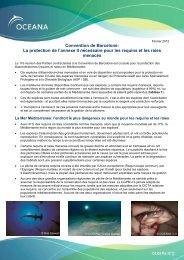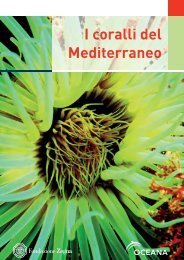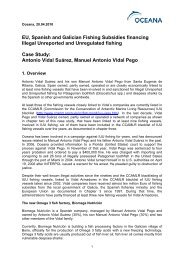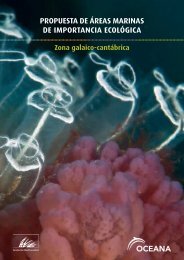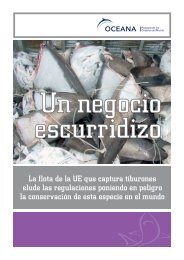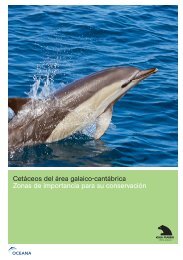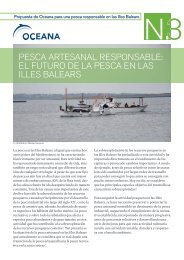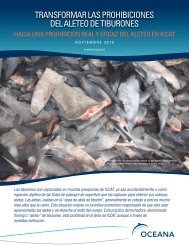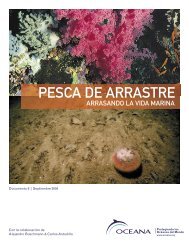Download - Oceana
Download - Oceana
Download - Oceana
You also want an ePaper? Increase the reach of your titles
YUMPU automatically turns print PDFs into web optimized ePapers that Google loves.
deep-sea sponge aggregations, OCEANA proposes the following:<br />
- The presence of this habitat in the II region should be taken into account and listed.<br />
- Many of the aggregations that occur on the rocky bottom in the galaico-cantabrian area (circalittoral<br />
bottoms) should be considered as important sponge aggregations and listed by OSPAR. Therefore, the<br />
habitats “deep-sea sponge aggregations” should be modified in order to not only include deep-sea species<br />
but also important sponge aggregations that occur in the OSPAR southern area.<br />
- Many other species apart from those cited in the background document should be added.<br />
Detailed below are the different types of habitats that OCEANA proposes to be included as “deep-sea<br />
sponge aggregations” or “sponge aggregations”:<br />
SPONGE AGGREGATION TYPES PROPOSED BY OCEANA:<br />
1. Asconema setubalense agreggation on bathyal rocky bottoms<br />
1.1. Mixed aggregation of Asconema setubalense, Callogorgia verticillata and other desmosponges<br />
2. Phakellia ventilabrum aggregation on circalittoral rocky bottom<br />
3. Artemisina transiens aggregation on circalittoral rocky bottom<br />
4. Axinella spp. aggregation on upper circalittoral rocky bottom<br />
5. Cliona celata agreggation on upper circalittoral rocky bottom<br />
6. Suberites virgultosus aggregation on circalittoral soft sediment bottom in the Baltic Sea.<br />
51



